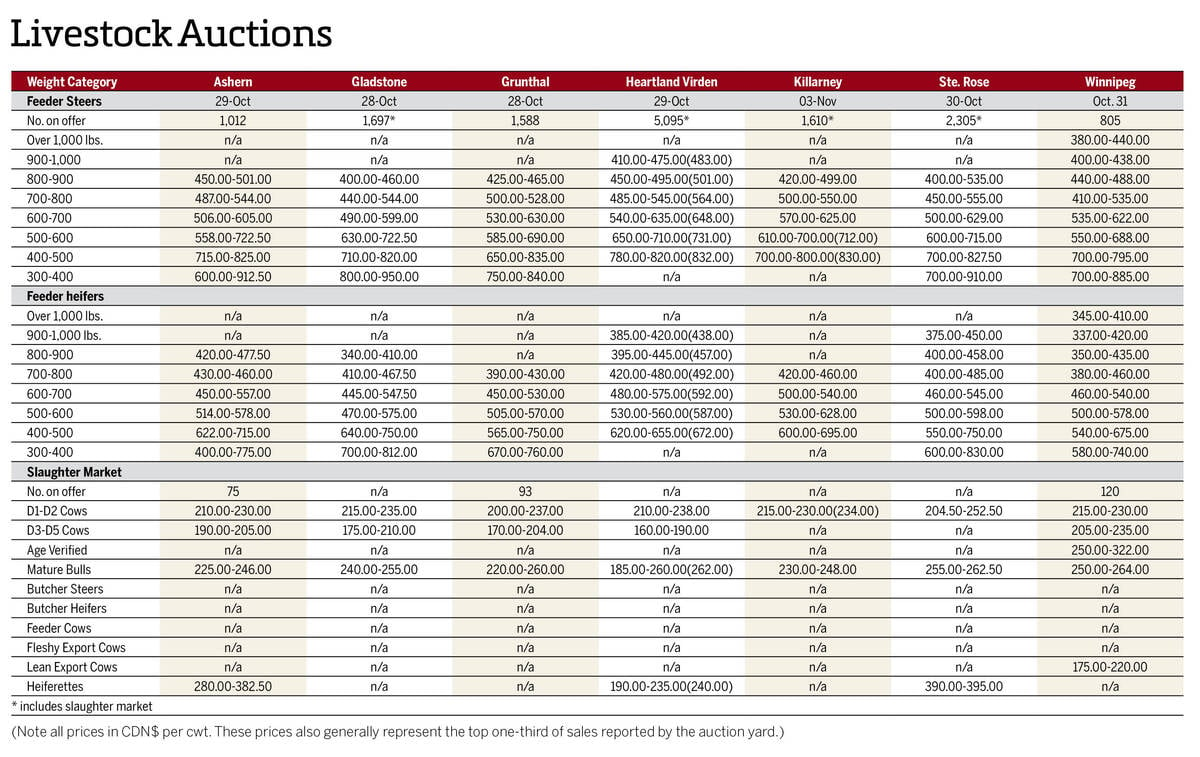There was little to find in terms of surprises within the U.S. Department of Agriculture’s (USDA) monthly supply/demand estimates released on Feb. 8 — and even less so with wheat.
Ending stocks for U.S. wheat were projected at 568 million bushels, only one million more than in USDA’s January report and right between the low (558 million) and average (579 million) pre-report trade guesses. Planted area, yield and exports were left unchanged while domestic use decreased by one million bushels to 1.125 billion.
Projected global wheat ending stocks grew by 950,000 tonnes to 269.34 million, rising more than the trade expected, but to what would still be the lowest total since 2016-17. A 2.49 million-tonne increase in production was nearly offset by a 2.46 million-tonne gain in feed use.
Read Also

Manitoba cattle prices, Nov. 4
Manitoba cattle sale prices for the week of Oct. 28 to Nov. 4, 2025.
While the figures were pretty much neutral, maybe even slightly bullish, wheat futures on the Chicago Board of Trade (CBOT) made their gains at the end of the day. The March Chicago wheat contract jumped 15 U.S. cents per bushel to close at US$7.6475, its first positive day in four sessions. The March Kansas City hard red wheat contract closed 10.25 U.S. cents higher at US$8.96/bu., its highest close since Nov. 30. The March Minneapolis spring wheat contract moved up nine U.S. cents/bu. to close at US$9.26, which ended a four-day slide. As a result, all three prices resided between their 50- and 100-day averages.
Despite all three contracts correcting themselves downward the next day, wheat prices may be on the verge of an upward shift.
The projected U.S. wheat carryout of 568 million bushels would still be the lowest in 15 years and U.S. exports have been middling, with December’s 1.079 million tonnes being the lowest monthly total since October 1971. The U.S. southern Plains are expecting precipitation this coming week, but it won’t be enough to reverse the deteriorating hard red winter crop.
The situation in Europe also seems supportive for prices. The earthquake which devastated parts of Turkey and Syria has closed 128 out of 535 flour mills in the former. Meanwhile, the Black Sea grain initiative which allowed Ukrainian grain exports on the body of water is set to expire in mid-March, where Russian inspectors have slowed down vessel traffic. Any sort of escalation in the Russian invasion of Ukraine could also happen in an instant.
While Russian wheat production expands and Ukraine’s drops, it should be noted both of their crops combined will be a 4.83 million-tonne rise compared to 2022. India may also extend its ban on wheat exports to mid-2024 despite a potential record harvest of 112 million tonnes.
Meanwhile, Canadian wheat stocks as of Dec. 31 increased 32.6 per cent from the year before, to 22.29 million tonnes, according to Statistics Canada’s grain stocks report released on Feb. 7. The total is below the five-year average of 23.52 million, pulled down by the drought-reduced 2021 year-end total of 16.82 million.
As cheaper Russian wheat floods the market and pulls down prices in the short term, circumstances are seemingly setting up for a positive breakthrough in prices. And that shouldn’t come as a surprise.
The same StatCan report pegged domestic canola stocks as of Dec. 31 at 11.36 million tonnes, up 29.3 per cent from one year earlier. However, it failed to cause any significant movement in canola prices, which have drifted downward but rangebound over the past week.
The March canola contract increased by $2.70 per tonne to $827.70 during the week ended Feb. 9. One analyst believes canola had been pressured by a relatively strong Canadian dollar and could pull back further with a decline in crude oil prices.
















